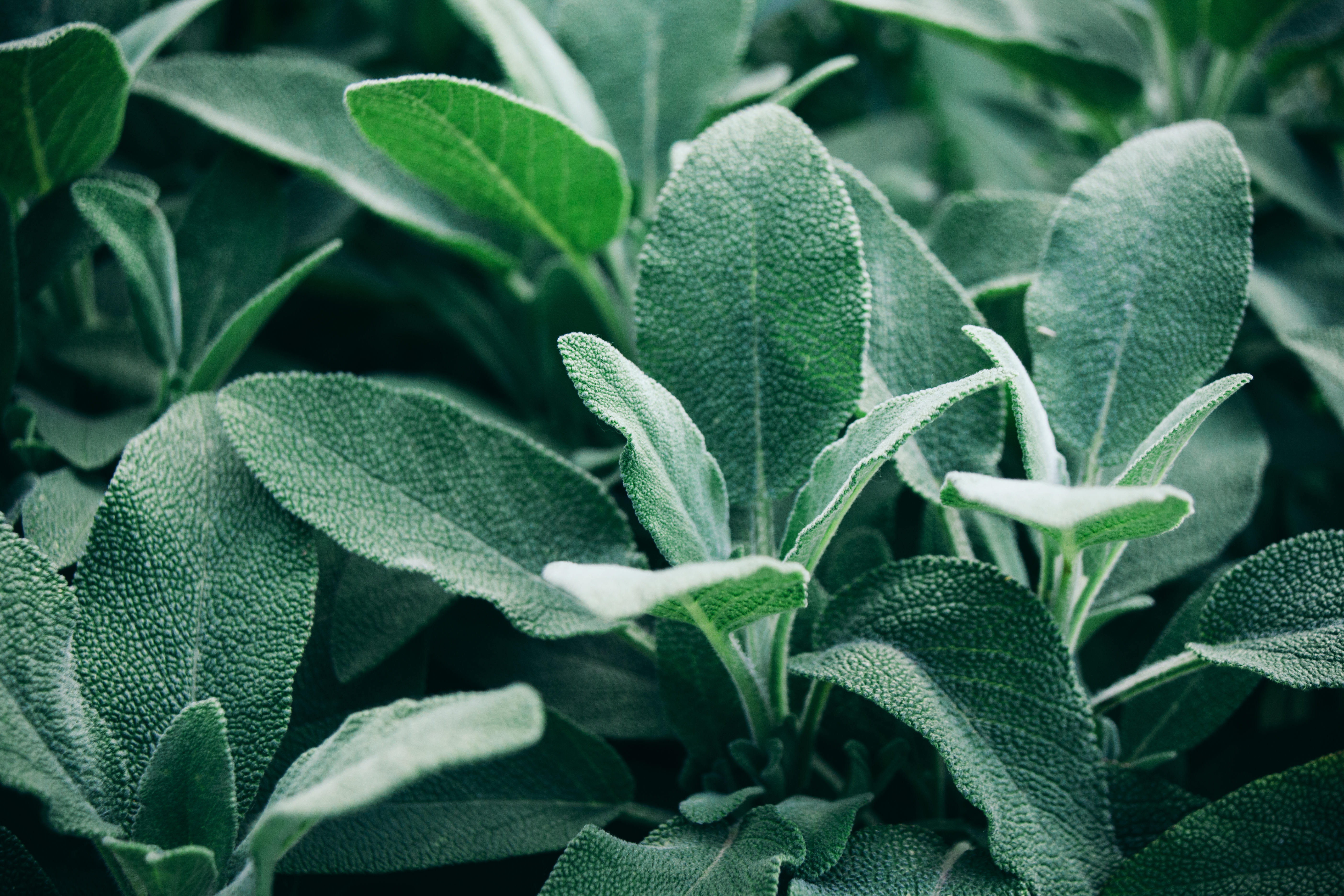Origin
Salvia officinalis , commonly known as Sage, is a fragrant evergreen perennial herb that is often used in cooking. It is related to Mint (belonging to the same family, Lamiaceae ).
This plant is native to the northern Mediterranean coast, but can now be found all over the world!
There are actually many different types of Sage, however, the one that is most often used for culinary purposes is known as Garden Sage.

Care
Like other herbs, Sage needs plenty of sunlight in order to thrive indoors. Without enough light, it can quickly start to look unhappy. Be sure to place yours in a very sunny spot in your home - around 6 to 8 hours of sunlight a day is ideal. If you're not able to provide your Sage with enough natural light, you can supplement it using grow lights.
Once established, Sage is fairly drought-resistant and can be easily killed by overwatering. It's therefore important to ensure that your plant is potted in a well-draining soil in a pot that has sufficient drainage holes. Only water again when the soil is dry to the touch.
Make sure to rotate your Sage plant every now and then in order to help encourage even growth. Note that Sage can also produce purplish-blue flowers in the summertime, however, if you plan to grow your Sage to eat, you should prune off these flowers as they take energy away from leaf production.

Other
It is believed by some that Sage symbolizes success. How well your Sage plant does is said to reflect how well your affairs in business will do as well!
This herb has been used as an ingredient in various dishes for thousands of years. The Ancient Romans and Greeks utilized it as a way to preserve meat, and the Ancient Romans further used it medicinally and ceremonially.
The Ancient Romans weren't the only ones to make use of Sage's natural antibacterial and antiseptic properties - it has additionally historically been used by Native Americans and is also a key part of traditional Chinese medicine. Finally, it was also popular in 1800s America to rub Sage on the teeth in order to help whiten them.